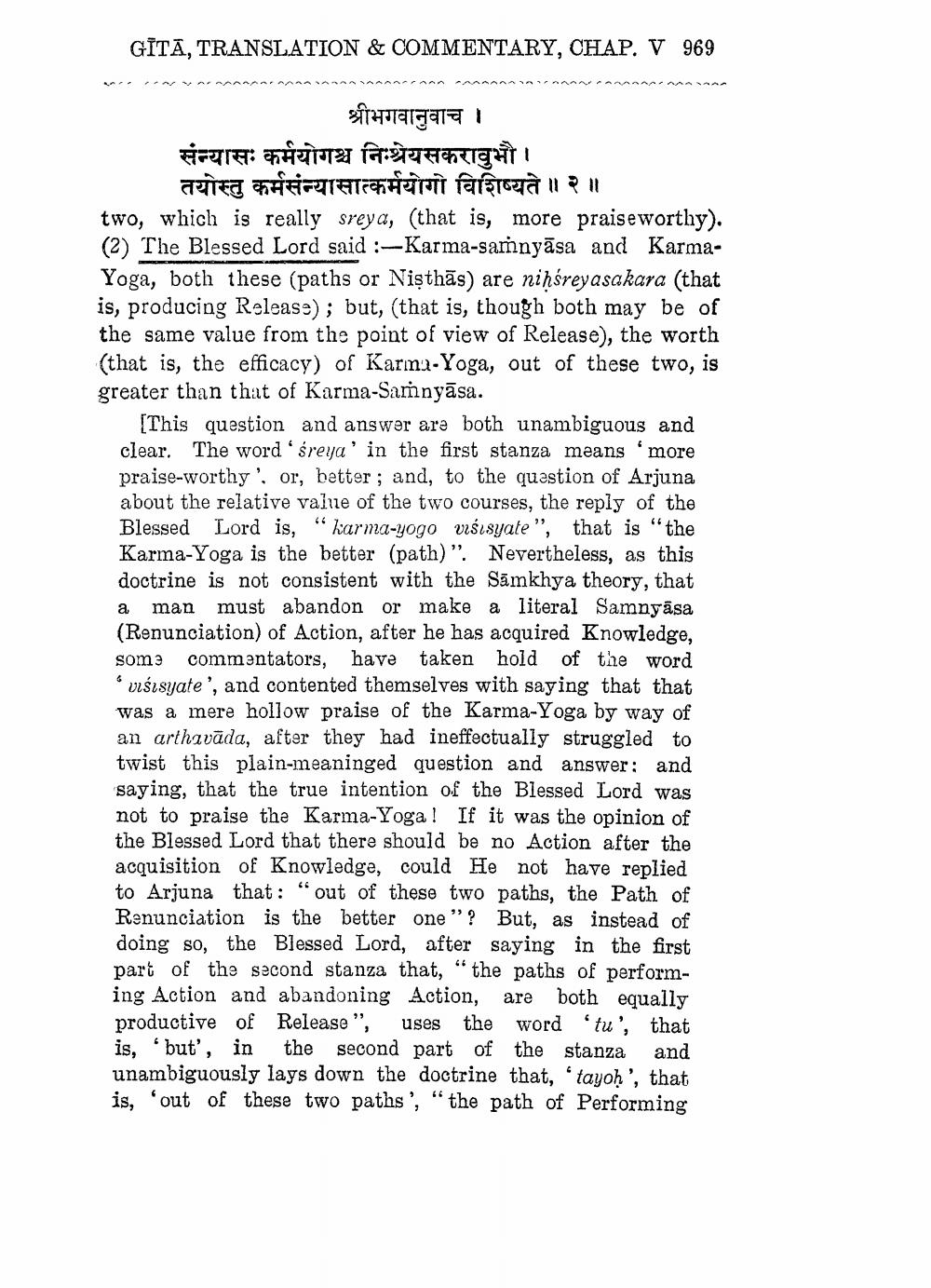________________
GĪTĀ, TRANSLATION & COMMENTARY, CHAP. V 969
श्रीभगवानुवाच ।
संन्यासः कर्मयोगश्च निःश्रेयसकरावुभौ । तयोस्तु कर्मसंन्यासात्कर्मयोगो विशिष्यते ॥ २ ॥
two, which is really sreya, (that is, more praiseworthy). (2) The Blessed Lord said :-Karma-samnyasa and KarmaYoga, both these (paths or Nisthās) are niḥśreyasakara (that is, producing Release); but, (that is, though both may be of the same value from the point of view of Release), the worth (that is, the efficacy) of Karma-Yoga, out of these two, is greater than that of Karma-Samnyāsa.
[This question and answer are both unambiguous and clear. The word 'sreya' in the first stanza means more praise-worthy. or, better; and, to the question of Arjuna about the relative value of the two courses, the reply of the Blessed Lord is, karma-yogo visisyate", that is "the Karma-Yoga is the better (path)". Nevertheless, as this doctrine is not consistent with the Samkhya theory, that a man must abandon or make a literal Samnyāsa (Renunciation) of Action, after he has acquired Knowledge, some commentators, have taken hold of the word visisyate', and contented themselves with saying that that was a mere hollow praise of the Karma-Yoga by way of an arthavada, after they had ineffectually struggled to twist this plain-meaninged question and answer: and saying, that the true intention of the Blessed Lord was not to praise the Karma-Yoga! If it was the opinion of the Blessed Lord that there should be no Action after the acquisition of Knowledge, could He not have replied to Arjuna that: "out of these two paths, the Path of Renunciation is the better one"? But, as instead of doing so, the Blessed Lord, after saying in the first part of the second stanza that, "the paths of performing Action and abandoning Action, are both equally productive of Release", uses the word 'tu', that is, but', in the second part of the stanza and unambiguously lays down the doctrine that, 'tayoḥ', that is, 'out of these two paths", 'the path of Performing




